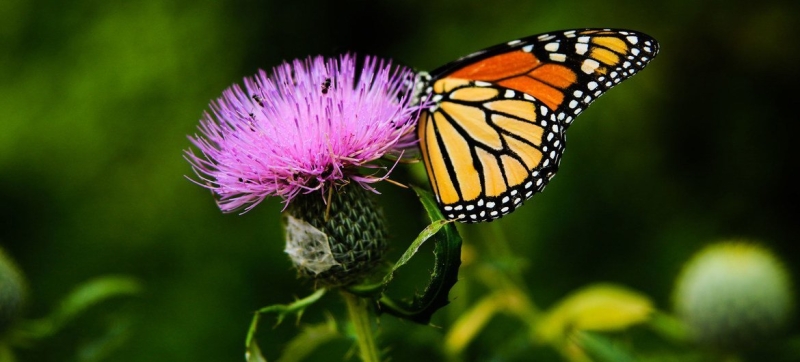
Loss of biodiversity affects the functioning of ecosystems, causing species to become less able to respond to changes in the environment. WE EXPLAIN | What is biodiversity and how to preserve it? Climate and Environment
We’ve been hearing the phrase “biodiversity loss” a lot lately. Species of flora and fauna are disappearing, others are under threat. How serious this problem is and how they are trying to solve it – we tell you in our material.
What does “biodiversity” mean and why is it important?
Under Biodiversity refers to all types of life on Earth. The UN Convention on Biological Diversity describes it as “diversity within species, between species and the diversity of ecosystems, including plants, animals, bacteria and fungi.”
Species diversity maintains the balance of the global ecosystem, providing us with everything we need to live, including food, water, clothing, medicine and shelter. More than half of the world’s GDP is directly dependent on natural resources. More than a billion people rely on forests for their livelihoods. For hundreds of millions of people, that source is the seas.
Biodiversity is also a natural buffer against climate change. Land and ocean ecosystems act as carbon sinks, absorbing more than half of all emissions.
Is Biodiversity Loss a Crisis?
Yes, this is a crisis. For example, the natural carbon sinks mentioned above are degrading: the Amazon forests are being cut down, salt marshes and mangrove swamps are disappearing.
Unsustainable and excessive use of natural resources by humans is one of the main causes of biodiversity loss. Since 1990, about 420 million hectares of forest have been lost. The main driver of deforestation continues to be the expansion of agricultural land.
Other causes of species decline and extinction include overfishing and the introduction of invasive alien species (species that have become established in environment outside their natural habitat, which can negatively impact local species and ecosystems). , can lead to the extinction of about a million species of animals and plants. Among them are South China tigers, Indonesian orangutans, giraffes, parrots, as well as oak trees, cacti and seaweed.
Read also:
COP28: $7 trillion spent annually on climate-damaging investments
Loss of biodiversity affects the functioning of ecosystems, leaving species less able to respond to changes in the environment and increasingly vulnerable to natural disasters. If there is a large diversity of organisms in an ecosystem, chances are that they will not all be affected equally, and if one species goes extinct, a similar species may take its place.
Combined with soaring pollution levels, environmental degradation and biodiversity loss are having a profoundly negative impact on communities around the world. As global temperatures rise, once-fertile grasslands turn into desert, and hundreds of so-called “dead zones” appear in the ocean, where virtually no life remains.
What is a Biodiversity Conservation Plan?
The plan, officially called the Kunming-Montreal Global Biodiversity Framework, is a landmark agreement initiated by the United Nations by 196 countries. Essentially, it is a guide to needed global conservation action until 2030.
The plan was approved following the Conference of the Parties to the Convention on Biological Diversity in Montreal in 2022. The meeting was originally scheduled to take place in Kunming, China, but was moved to Canada due to restrictions related to the COVID-19 pandemic.
The purpose of the agreement is to help the international community address biodiversity loss, restore the planet’s ecosystems and protect the rights of indigenous peoples. It is indigenous peoples who suffer most from the loss of biological diversity and environmental degradation associated with industrial activities, toxic waste emissions, water and soil pollution, and deforestation.
The agreement presents concrete measures that will help stop and even reverse the destruction of nature, including protecting 30 percent of the planet’s land area and 30 percent of degraded ecosystems by 2030. Currently, 17 percent of land and about eight percent of marine areas are protected. The plan also contains proposals to increase financial support for developing countries and indigenous peoples.
To implement the Kunming-Montreal Convention, countries will need to develop national biodiversity strategies and action plans, and establish or revise national goals to align with global goals.
What else is the UN doing to protect biodiversity?
Next month the UN Environment Assembly will meet in Nairobi. The event will bring together governments, non-governmental organizations, academia and the private sector. The meeting participants will discuss climate change and biodiversity loss.
The main event of this year in the field of environmental protection will be the UN Biodiversity Conference, which will be held in Colombia in October and will be dedicated to the restoration of natural resources.
